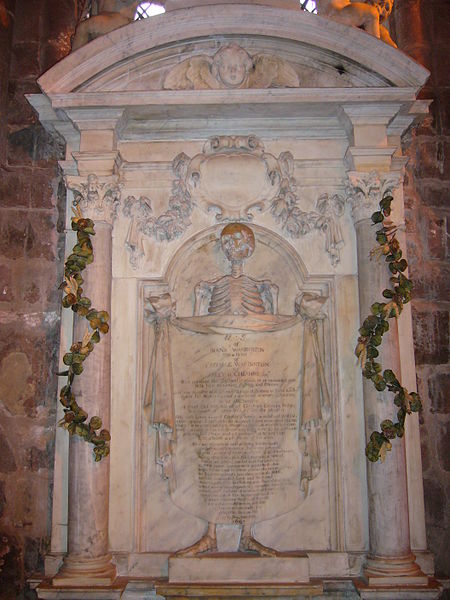Memento mori is an artistic or symbolic trope acting as a reminder of the inevitability of death. The concept has its roots in the philosophers of classical antiquity and Christianity, and appeared in funerary art and architecture from the medieval period onwards.
The outer panels of Rogier van der Weyden's Braque Triptych (c. 1452) show the skull of the patron displayed on the inner panels. The bones rest on a brick, a symbol of his former industry and achievement.
Memento mori. Gravestone inscription (1746). Edinburgh. St. Cuthbert's Churchyard.
Dance of Death (replica of 15th-century fresco; National Gallery of Slovenia); No matter one's station in life, the Dance of Death unites all.
Unshrouded skeleton on Diana Warburton's tomb (dated 1693) in St John the Baptist Church, Chester
Vanitas is a genre of art which uses symbolism to show the transience of life, the futility of pleasure, and the certainty of death, and thus the vanity of ambition and all worldy desires. The paintings involved still life imagery of transitory items. The genre began in the 16th century and continued into the 17th century. Vanitas art is a type of allegorical art representing a higher ideal. It was a sub-genre of painting heavily employed by Dutch painters during the Baroque period (c.1585–1730). Spanish painters working at the end of the Spanish Golden Age also created vanitas paintings.
Vanitas by Antonio de Pereda
Vanitas Still Life with Self-Portrait, Pieter Claesz, 1628
Vanitas painting, self-portrait c. 1610, most probably by Clara Peeters
Great Vanity, Sebastian Stoskopff, 1641








